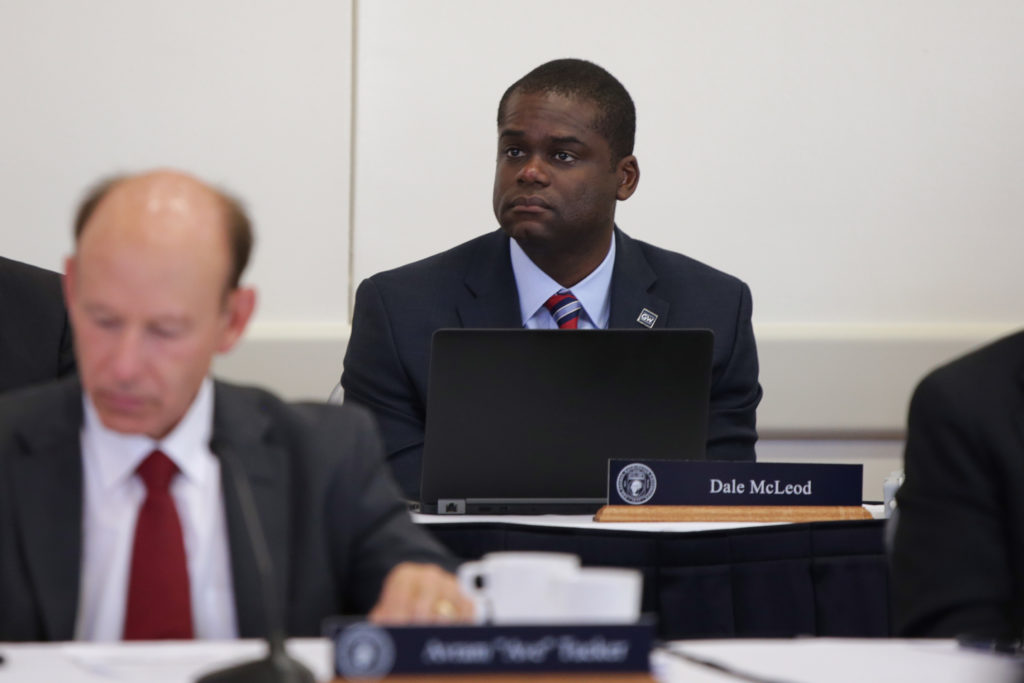After three years, the University has yet to find a new vice president of human resources.
Sabrina Ellis, the last executive to hold the role, left GW in 2016 to take on a similar role at New York University, and Dale McLeod, the former associate vice president of HR operations, has filled her seat in the interim. Officials said last March that Executive Vice President and Chief Financial Officer Mark Diaz, who oversees the human resources division, would evaluate the position when he stepped into his role in August – but he has yet to announce any updates.
“Executive Vice President and CFO Mark Diaz, who started at the University in August, is evaluating a large and complex organization and determining how to best support the needs of the division and the University going forward,” University spokeswoman Lindsay Hamilton said in an email.
Hamilton added that the University will update the community when more information is available.
She declined to say when the University expects to fill the position or what the challenges the University has encountered in finding a replacement. She also declined to say what has delayed the selection of a new leader or if officials have launched a search for the position.
Hamilton declined to describe the characteristics the administration is looking for in the next vice president of human resources.
Management experts said leaving the position unfilled for an extended period of time could hurt the administration as it attempts to address employees’ complaints about institutional culture. Addressing GW’s “transactional” culture has been a top priority during University President Thomas LeBlanc’s first two years in office.
A University-sponsored survey of faculty and staff in the fall found that employees are mostly dissatisfied with four areas of institutional culture, including inconsistent leadership and inefficient communication. A team of top administrators is now developing a plan to tackle the issues brought up in the evaluation.
Sam Larson, the assistant dean of operations and finance at the College of Education at Michigan State University, said the problems identified in the survey results are typically handled by staff in the human resources department. If the top position is not permanently filled, GW could face difficulty instituting policy and protocol changes because other leaders may be stretched too thin with other responsibilities, Larson said.
“It’s harder, I think, to get the momentum going and the long-term commitments that it will take,” she said.
She said the administration may have made a strategic decision to hold off hiring until after the assessment was finished so the search team can look for a leader who has experience dealing with the complaints employees highlighted in the assessment.
“GW has already done the work,” she said. “That brings clarity. That could be very beneficial.”
Andy Brantley, the CEO of the College and University Professional Association for Human Resources, said the University’s next HR leader should create an “inclusive” environment with strong communication between divisions to act on the information collected in the survey.
But he added that every supervisor on campus must help follow through on whatever policies and efforts administrators decide to initiate as part of a drive to shift the institution’s culture.
“HR can create and implement outstanding programs and resources, but improving and/or changing the culture will only occur if supervisors are held accountable for making the improvement and/or changing a reality,” he said.
He added that having an interim leader in the role will not affect the cultural change as long as employees view the interim leader as a change-maker and believe in his abilities.
Connie Wanberg, a professor of industrial relations at the University of Minnesota, said leaving the position vacant for three years is “too long” and adds extra work for the person who has to lead the culture shift. She added that although another administrator could lead the cultural change LeBlanc wants, bringing in a new vice president could add energy and a much-needed focus to the project.
“Even in the best circumstances with really good people, it’s challenging to follow through on cultural assessment,” she said.





